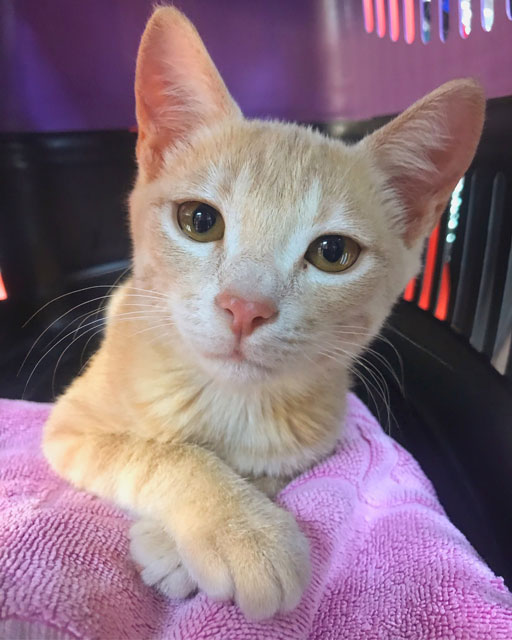Ovarian Remnant Syndrome in Cats

Ovarian remnant syndrome occurs when a spayed female cat seems to continue coming into heat. Because a spay surgery in cats is usually an ovariohysterectomy, during which the ovaries and uterus are both removed, it should not be possible for them to cycle or go into heat.
Why Do Cats Go Into Heat?
Cats go into heat seasonally. So, when it is warm, a female cat goes into heat every few weeks until she becomes pregnant or cold weather arrives.
Signs that a cat is in heat include restlessness, being extremely vocal, urinating in the house, and sticking the rear end in the air.
Diagnosis of Ovarian Remnant
If a cat that is supposedly spayed continues to go into heat, that means there is a source of estrogen triggering the cycles. That may be because some ovarian tissue remained in the abdomen during surgery. To diagnose it, the vet must first verify that there is abnormal estrogen in the cat's system.
If a spayed cat appears to be going into heat, a veterinarian may do a vaginal smear, taking a cotton swab to get a sample from the vagina to look for specific types of cells indicating the presence of estrogen.
Blood testing can indicate the presence of estradiol, which is a type of estrogen.
An in-house lab test that tests for luteinizing hormone (LH) is a test sometimes done to determine if a cat has been spayed. If LH is low when the cat is not exhibiting signs of heat, there is estrogen in the system.
What Else Can Cause Similar Signs in Cats?
Other things that can cause signs similar to a cat being in heat can include:
- Urinary tract infection
- Personality
- Behavioral issues
Generally, those conditions will not be cyclical, like those produced by estrogen will.
What Causes Estrogen in a Spayed Cat?
Exposure to human topical estrogen-containing creams can result in signs of heat in cats. Usually, this happens when a person wears a hormone cream and the cat licks it off.
Retained ovarian tissue can cause estrogen and heat cycles in cats. Sometimes, tiny bits of ovarian tissue are present separately from the main ovaries, and it can be difficult or impossible to see them at the time of spay surgery.
Treatment of Ovarian Remnant Syndrome in Cats
The treatment for this condition is to do exploratory surgery to locate and remove the retained ovarian tissue. It can be easier to identify right after a heat cycle, which is when the ovarian tissue will be most prominent.
It might be necessary for a specialist to do the surgery because sometimes the tissue is quite tricky to find.
If the remnant is not removed, the cat will continue to have heat cycles and be at higher risk for mammary cancer. Also, if there is some uterine tissue still present, the heat cycles can cause stump pyometra, which is an infection that can be life-threatening.
You May Also Like These Articles:
Feline Lower Urinary Tract Disease
Cat Not Using Litter Box? Inappropriate Urination in Cats



